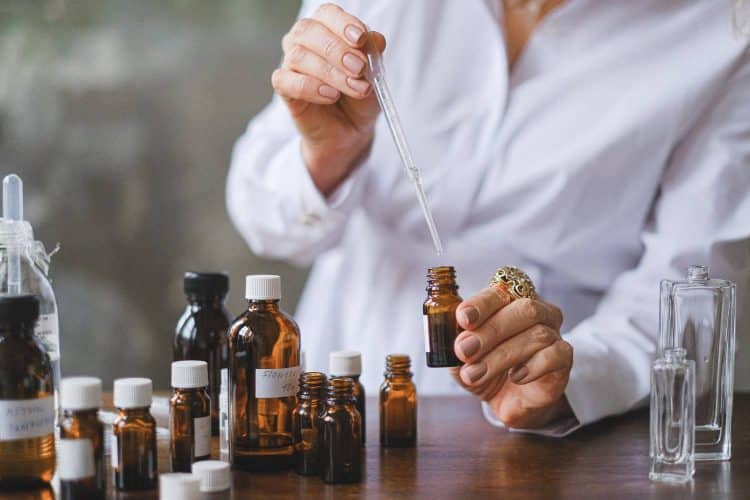With rising demand for cannabis-derived compounds like terpenes, polyphenols, and cannabinoids, many are searching for extraction methods with improved efficiency. When it comes to selectively Recover Terpenes, the process can be difficult, time consuming, and generally yields low recoveries. Microwaves (MW) are a technique that can improve efficiency, speed, and lower cost of cannabis terpene extraction. A 2021 study discussed a pilot-scale extraction process for microwave-assisted hydrodistillation that captures monoterpenes, sesquiterpenes, and a small amount of phytocannabinoids. [1] The resulting extract is most accurately called a “volatile fraction” that is slightly different than an “essential oil.”
Traditional extraction methods for terpenes include solid-liquid extractions, such as maceration and percolation, Soxhlet extraction, and hydro/steam distillation. Newer methods that aim to improve extraction efficiency, speed, and cost include MW-assisted extraction, ultrasound-assisted extraction, pressurized liquid and supercritical fluid extraction, and instant controlled pressure-drop techniques. MW-assisted extraction offers advantages like rapid heating, shorter process time, reduction in solvent usage, higher reproducibility, higher extraction rates, and increased yield.
Microwave-Assisted Hydrodistillation (MAHD) Process
This MW-assisted hydrodistillation process was performed using a multimode MW reactor (ETHOS X by Milestone s.r.l., Italy), at its maximum power of 1800 W and in a 12-liter Pyrex vessel. An infrared sensor was used to monitor temperature throughout the process. Microwave power used for extraction was 500 W for 3 min, 1100 W for 3 min, 1600 W for 14 min, and finally, 1500 W for 90 min, for a total time of 1-hour and 50-minutes.
Plant material was stored frozen prior to processing and was used directly from the freezer. Water was added to the extraction vessel with matrix-to-liquid ratios of 1:1 (kg/L). After filling the vessel with water and plant material, it was placed in the reactor. The distillation head was assembled with a Florentine vase and the extraction process was started. The water recovered was recirculated back into the vessel. When the cycle was complete, an oily fraction of terpenes was produced which phase separated from the water fraction.
Terpene Recovery in Hydrodistillates
In general, terpenoid yields usually vary from 0.01 to 1.5% (or more) of the inflorescence dry weight. Conventional hydrodistillation yields approximately 0.12% of distillate (w/w in relation to dry inflorescence mass). This protocol for microwave-assisted hydrodistillation yielded approximately 0.35% by comparison. The total polyphenolic content of the MW-assisted hydrodistillate was very rich at about 5.35%. With regard to cannabinoids, the MW-assisted hydrodistillation process decarboxylated the cannabis material by approximately 70%, but largely preserved the cannabinoids in the biomass. This is a great benefit since the material can be further extracted with ethanol to extract the cannabinoids separately.
The researchers tested many variables such as water-to-flower material, water temperature, and type of water (deionized, salt, and tap waters). These factors can all impact performance when we selectively Recover Terpenes using MW-assisted hydrodistillation. If you are considering using this technique, you’ll want to be sure to read into these details and consider how they can impact temperatures, extraction times, and yield.
Reference
[1] Gunjević V, Grillo G, Carnaroglio D, Binello A, Barge A, Cravotto G. Selective recovery of terpenes, polyphenols and cannabinoids from Cannabis sativa L. inflorescences under microwaves. Industrial Crops and Products. 2021;162:113247. doi:10.1016/j.indcrop.2021.113247 [journal impact factor = 5.645; times cited = 1]
Photo: Photo by Anna Shvets from https://www.pexels.com/photo/person-holding-clear-glass-bottles-5682756/











